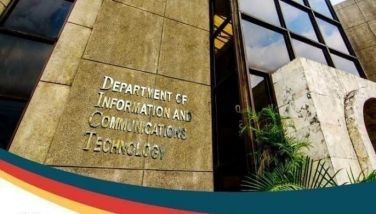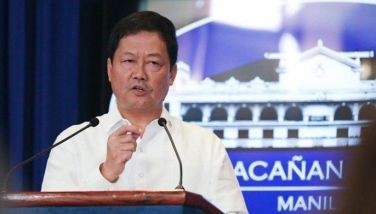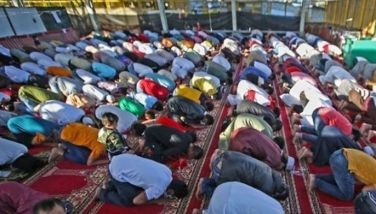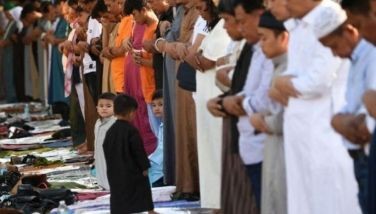The few against the many

Almost every country which attempted charter change in a democracy faces a dilemma on how the few against the many can live together in harmony.
The first system of democracy that we know of began in Athens in 507 BC. Its leader, Cleisthenes, implemented a system called “demokratia,” which means “rule by the people.” In effect it was the many that should prevail.
And by “rule of the people” he meant a direct democracy. The people decide directly in policy initiatives.
You can imagine the chaos and difficulty of implementing such a system. In 470 BC another Athenian politician Pericles came to the rescue and helped develop this rule by the people idea into an orderly political system for the Athenians.
In my opinion, despite their wish for a direct democracy it was not possible. A democratic political structure had to be created. That was the achievement of Pericles.
“He dominated Athenian politics and ruled by wise influence and negotiation. Pericles believed that all citizens should partake in government and was the first to offer a stipend to men in office. This action allowed any citizen to be involved, regardless of their economic standing.”
The call of President Duterte to open the draft submitted to him by the Consultative Committee he appointed is a wise move. Unfortunately such a discussion will not achieve the rule of the people because we have developed a peculiar political structure that presumes government is for the rich and powerful. Indeed it is the problem that has to be solved.
The difference between parliamentary and presidential systems was discussed in the 2005 Constitutional Commission appointed by then President Gloria Macapagal Arroyo. It specifically addressed problems brought about by our adoption of the presidential system as dictated by American colonialism.
Some historians have said this was influenced by the American revolution against Britain. It was a contest between the two systems.
In a presidential system, the executive leader, the president, is directly voted upon by the people (or via a body elected specificallyfor the purpose of electing the president, and no other purpose), and the executive leader of the parliamentary system is the prime minister who is elected directly from the legislative branch.
In the presidential system, it is more difficult to enact legislation, especially when the President has different beliefs and policies than the legislative body. The president only responds to the people, the legislative branch can’t really do anything to threaten the president. As a result, he can make it more difficult for the legislative body to do anything.
In the Parliamentary system, if the parliament doesn’t like the prime minister, they can cast a vote of no confidence and replace him. This tends to make the executive leader subservient to the parliament. In the Philippine experience this is perhaps the most intractable problem because of term limits. In a parliament a bad president can be removed simply by a vote of no confidence, while in the presidential system, only an arduous impeachment can remove a bad president.
Bottom line is, if you believe that government should have more checks and balances, then a presidential system will give you that. But then it is plagued by gridlocks and does get things but remains a talking shop between legislation and the executive. If you believe that the executive should have the power to enact laws quickly, then you should go for a parliamentary system.
“The draft constitution established a permanent and indissoluble nation, because it recognized the ethnicity, culture, religion, customs, traditions, language and distinct identities of our brothers and sisters in the Cordillera and Bangsamoro,” Puno said.
Critics of Charter change under the Duterte administration have accused him of encouraging amendments to maintain his hold on power, an allegation Malacañang has repeatedly belied, saying that the President has no desire to extend his six-year term that ends in June 2022. The same was said of President Ramos and President Arroyo.
But when Duterte says he does not wish to be president after his term I believe him. It is not an easy job to govern a country like the Philippines which is in the stranglehold of the oligarchy and its foreign supporters. To prove that he is sincere about this Duterte even urged the committee and Congress to put a provision requiring him to step down before the transition from presidential to federal system. So far that is the discussion, not between parliamentary vs. presidential.
The draft will go through scrutiny and possible revisions in Congress, acting as a constituent assembly, before it is presented for ratification through a plebiscite. That is the few dominating the many in the faulty election system we have.
We are back to square one when the first attempts for federalism was blocked. Hundreds of thousands of civilians were misplaced not to speak of troops from both sides who were killed.
This column is not against a substate or a Bangsamoro Juridical Authority however it is called. The underlying premise is to give political power to the substate and that is not allowed by the 1987 Constitution.
Federalism has been studied and sought as part of constitutional reform needed by the Philippines to energize the country and bring peace to Mindanao.
At present it is hamstrung by the misconception that once federated, the Manila government loses control.
During discussions in the Constitutional Commission created by PGMA, one idea put on the table was to distinguish between the federal principle and a fully created federal state. With that distinction the group agreed to use the term “evolving” federalism. If a parliamentary federalism were sought it would evolve slowly and taken in small steps. It would depend on how ready the region was to take up the responsibilities of a federated state.
When we went to the University of Marawi and met with leaders of the Muslim region sometime in 2005, federalism received a standing ovation from our audience declaring that “federalism” originated in the Muslim region. It was the only way to go if the Muslims wanted freedom of religion, a shariah law and a homeland they can call their own without secession.
When Misuari and the MNLF were the main players, the Organization of Islamic States cautioned them that it would not support if secession was sought. That was what gave federalism a push. It would be a compromise between secession and an unsatisfactory local autonomy laws.
- Latest
- Trending




























